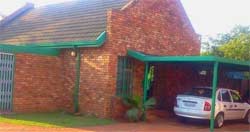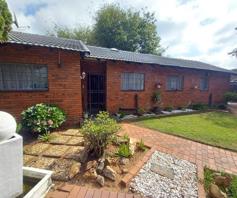FNB data reveals that the lower end of the residential property market outperforms the higher end in terms of price growth.

A three bedroom home in the Wilgehof suburb of Bloemfontein is selling for R630 000 through Rawson Properties Bloemfontein South. Click here to view.
Writing in the report, John Loos, FNB household sector and property strategist, says the upper income area value band shows an average price of R2.05 million by the fourth quarter of 2013.
The middle income areas recorded average price of R1.221 million, R804.429 for lower middle income and R422.183 for low income areas.
However, he says by Q4 2013, the lower middle income area showed the highest price growth of 7.8 percent, slightly higher than the low income areas with an average price growth of 6.2 percent as well as higher than the middle income areas with 5.6 percent and the upper income areas at 4.3 percent.
Loos points out that the lower middle income area price index overtaking the low income area index by a small margin may hint at the positive impact from a significant percentage of selling in order to upgrade properties coming from lower down the price ladder.
Agents surveyed have revealed an increase in “upgrade-related selling”, especially from the lower end below R1 million in price – and this, he says is believed to be driving a “sweet spot” in the market segment just above R1 million, although FNB price indices don’t yet reflect the positive impact in that segment just yet.
“Currently, the relative performances of the area value band price indices still largely reflect the slightly better performance of the lower priced end, driven by affordability considerations in what has for some years been a financially constrained environment.”
Furthermore, Loos notes that due to financial constraints of recent years, their Holiday Towns House Price Index and Major Metro Region House Price Index too shows growth of 2 percent and 6.2 percent year-on-year price growth respectively.
He says while still low, 2 percent price growth in the Holiday Towns Index represents a return to positive nominal price growth after three prior quarters of mild decline, hinting at improvement for holiday property demand as we go into 2014, he cautions that it is too early to draw conclusions at this stage.

However, he says by Q4 2013, the lower middle income area showed the highest price growth of 7.8 percent, slightly higher than the low income areas with an average price growth of 6.2 percent as well as higher than the middle income areas with 5.6 percent and the upper income areas at 4.3 percent.
According to FNB data, estate agents point to an increasing move in the number of homeowners selling in order to upgrade their properties (an estimated 20 percent of total selling) the highest percentage estimate since late 2007.
Loos says this could lead to middle and upper income area house prices showing a mild acceleration in growth in the near-term numbers too.
According to Bill Rawson, chairman of the Rawson Property Group, a surprise increase in interest rate puts further strain on home affordability for many as income levels do not keep up with the increasingly high cost of living.
“The average South African’s ability to afford the home of his choice will, regrettably, almost certainly decline further this year and those wanting to buy should seriously consider lowering their targets and ambitions in order to become homeowners, and should do all they can to maintain this ambition rather than to be rent payers in perpetuity.”
He concurs with Loos that property data shows that in the lower and middle income groups, investment in a house is the surest way for people to build up an asset.
Unless they are extremely self-disciplined, no other investment channel performs as satisfactorily for these income groups as does housing, points out Rawson.
Meanwhile, Jan Davel, managing director of RealNet, urges Pretoria empty-nesters and retirees looking to cut down on property running costs to downscale without delay.
He says this is because the average nominal price of large homes (220 to 400 square metres) in the metro has increased by 7.6 percent in the past year, while the average price of medium homes (140 to 220 square metres) has declined by 3.7 percent and that of small homes has risen by only 5.6 percent.
The Absa Housing Review shows the average price of a large home in Pretoria at almost R1.8 million currently and that of a small home at R720 000.
For this reason, Davel says owners of large family homes who sell now might well be able to buy their next, smaller home for cash, depending on how much equity they have in their existing home.

Priced at R720 000, this three bedroom townhouse in Silverton, Pretoria, is selling through RealNet Watermeyer. Click here to view.
“If they have paid off or nearly paid off the 20-year bond on their house, for example, they could probably realise enough cash from a sale now to buy a cluster or sectional title home in a secure complex outright – or at least to put down a really sizeable deposit.”
Downscaling will also enable these sellers to immediately start generating savings on maintenance, property taxes, insurance and utility costs that will most likely more than cover the monthly levy in a security development, or be available for further investment to boost their “retirement fund”.
He also notes that according to Absa data, price growth in the large home sector in Pretoria has been slowing down in the past few months, while the medium and small home sectors have seen an increase.
The small homes sector is especially experiencing supply constraints as repeat buyers downscaling often find themselves in competition with keen first-time buyers, and with the relatively low level of building activity currently, there is likely to be further upward pressure on prices, notes Davel.
He adds that those contemplating a move from an elderly family house to a newly-built smaller home should bear in mind that such homes are currently about 37 percent more expensive than similar pre-owned homes, and this will cut into any profit they make on the sale of their existing property. – Denise Mhlanga









